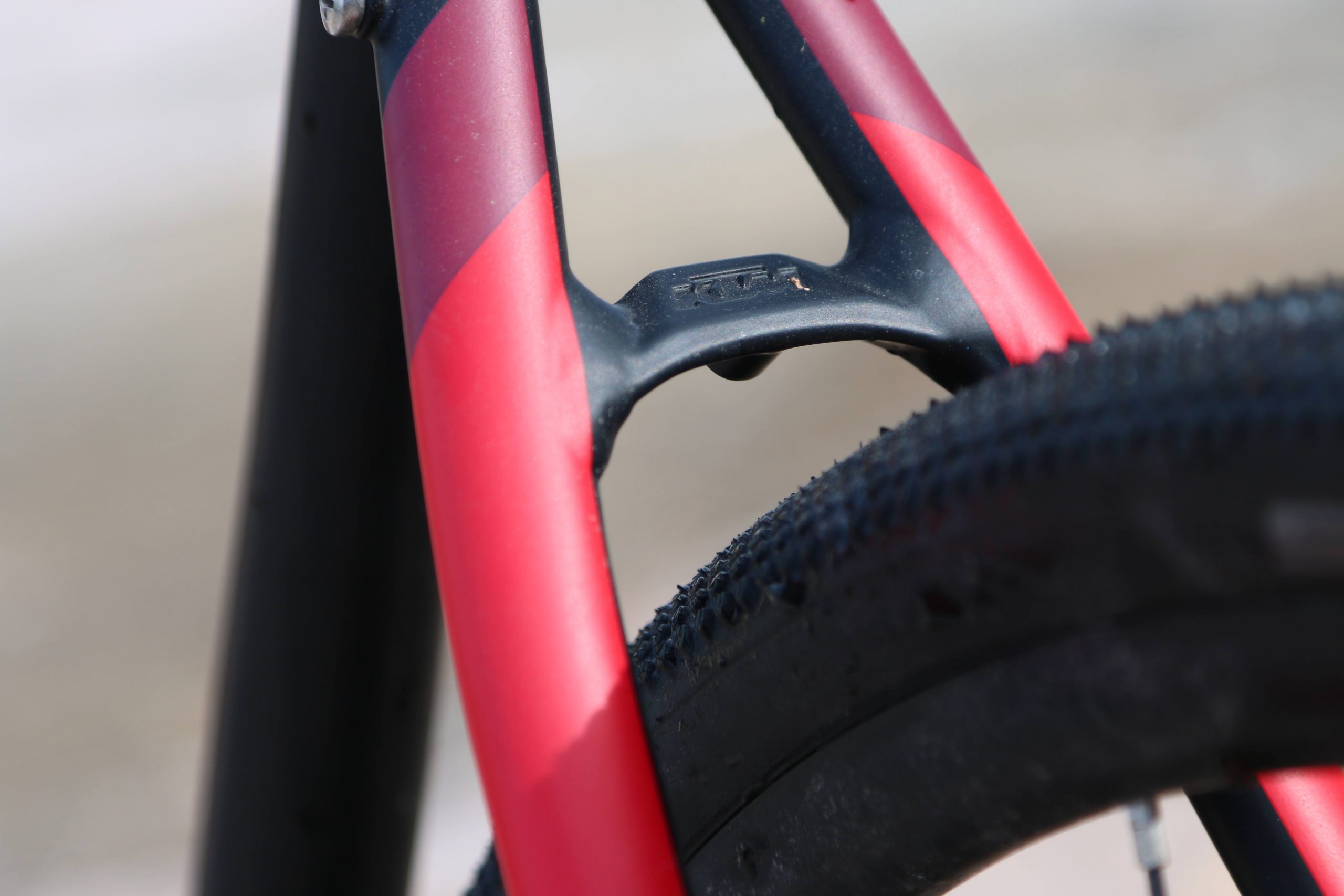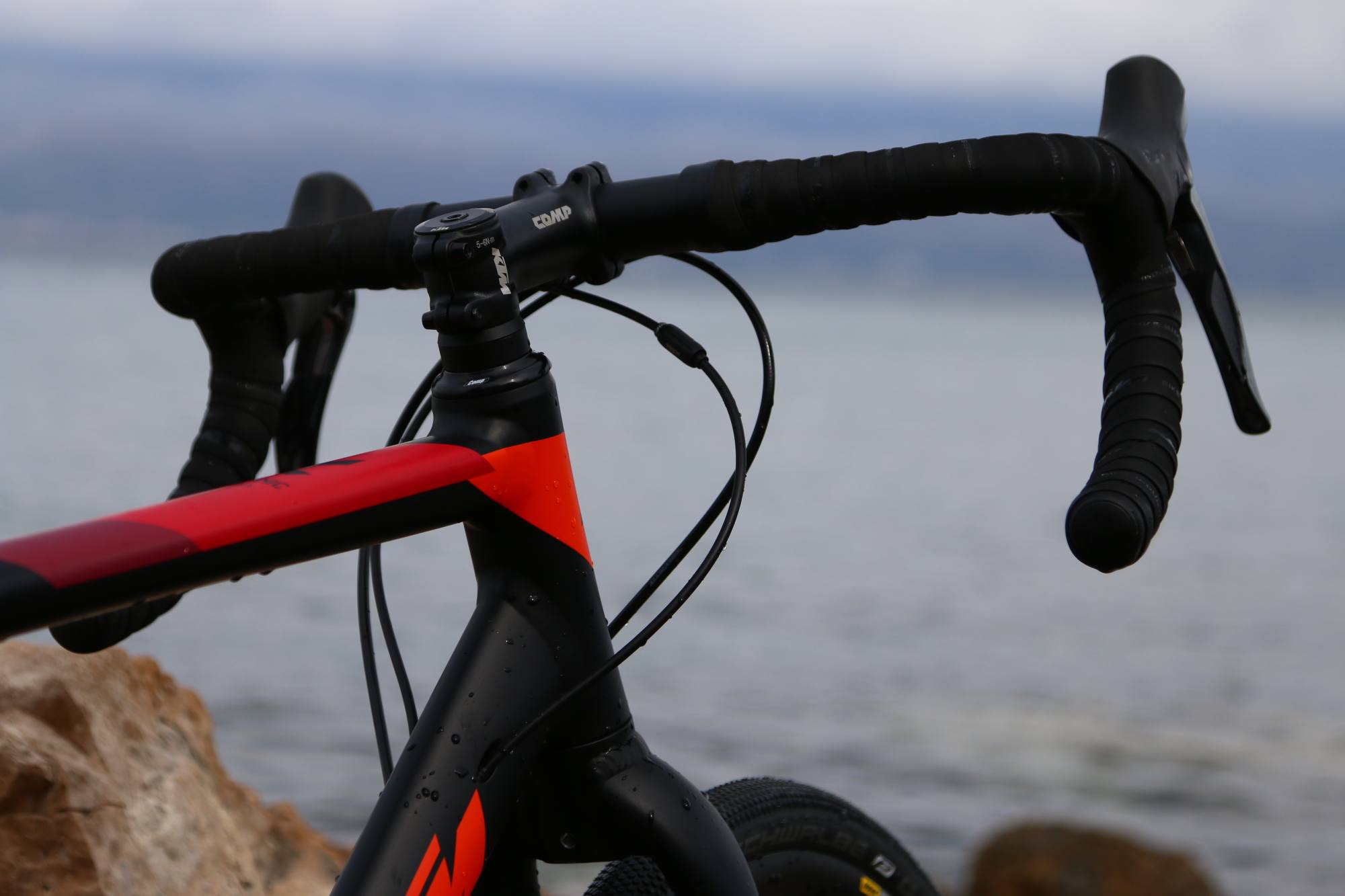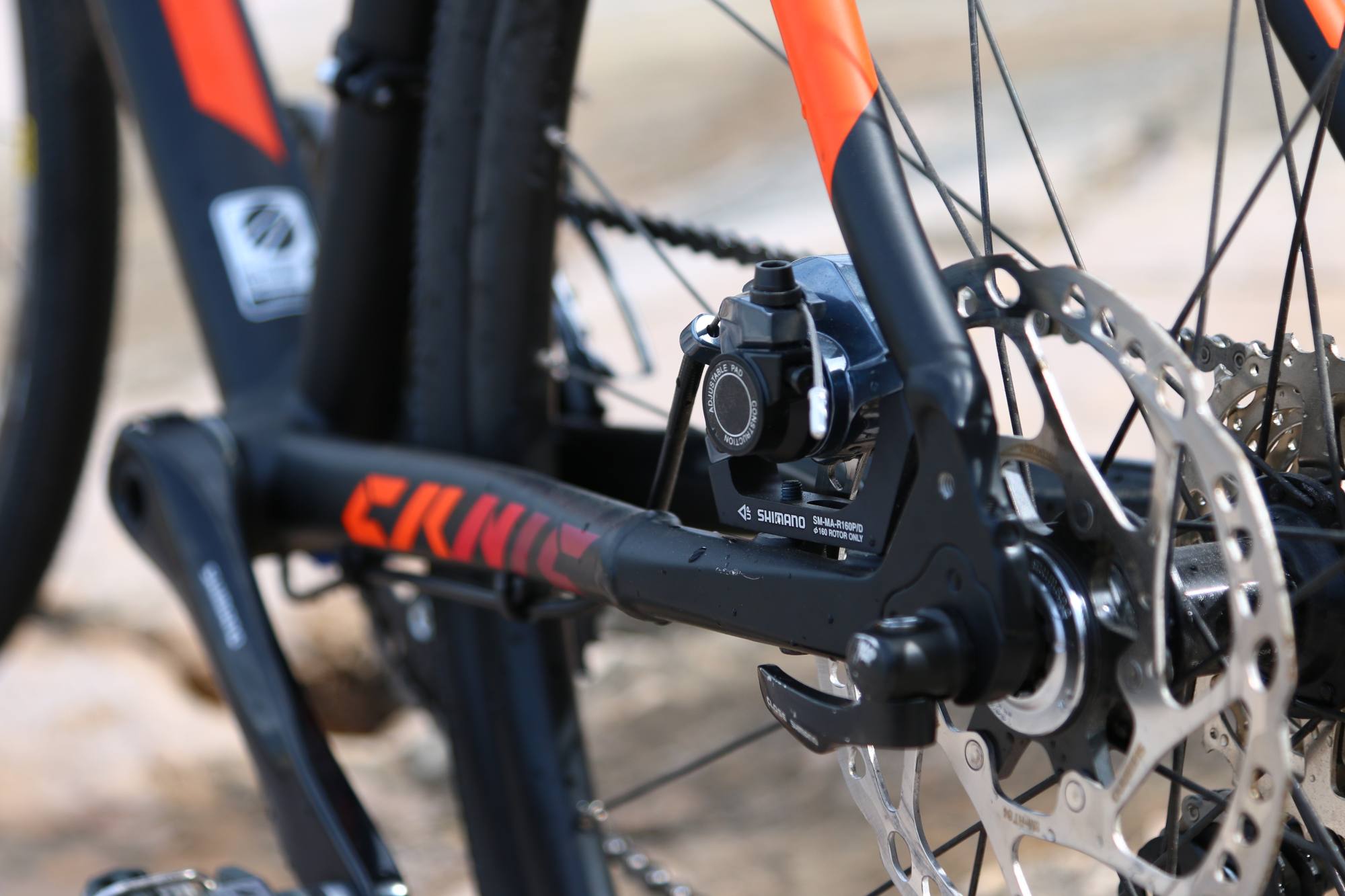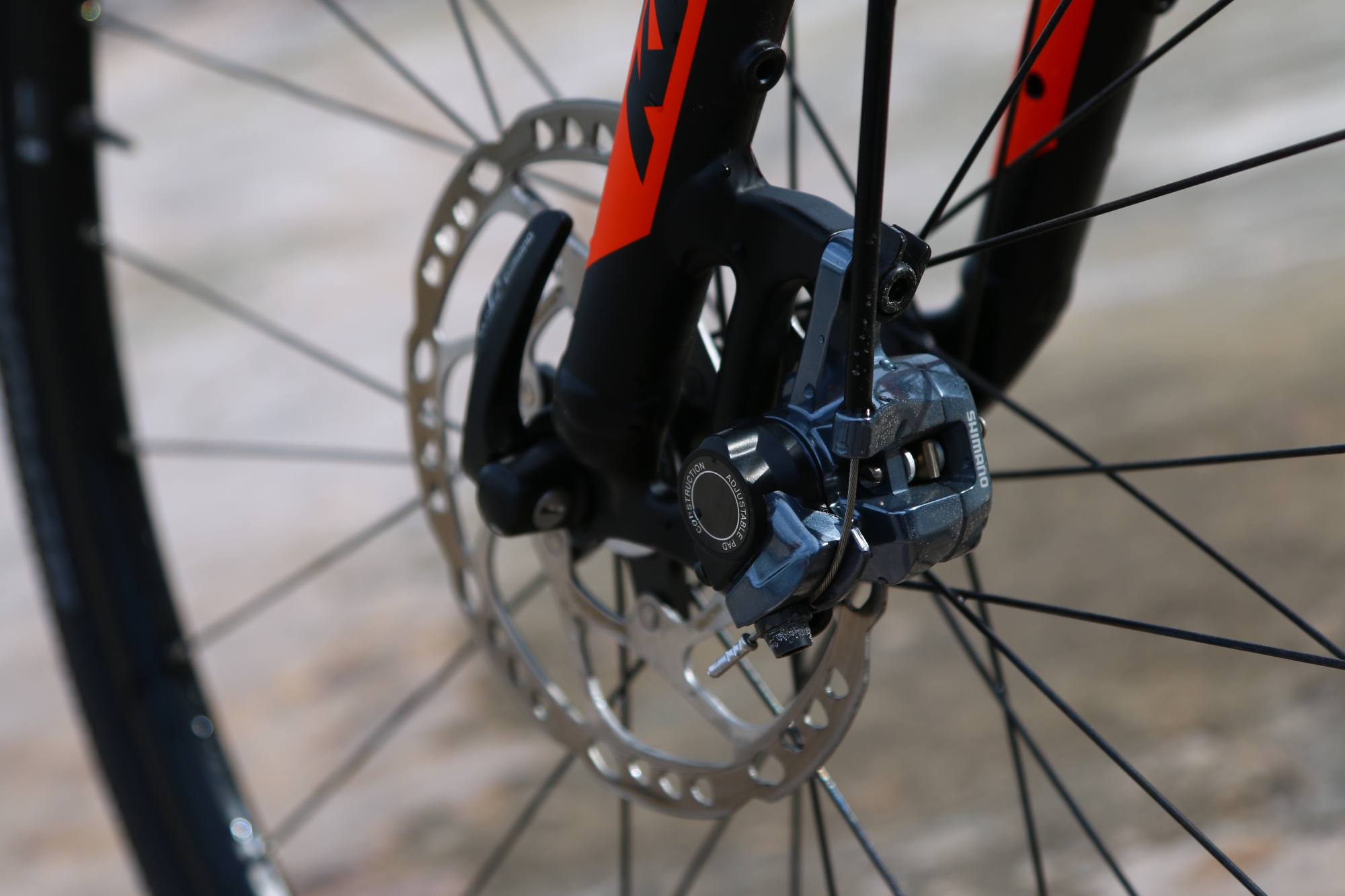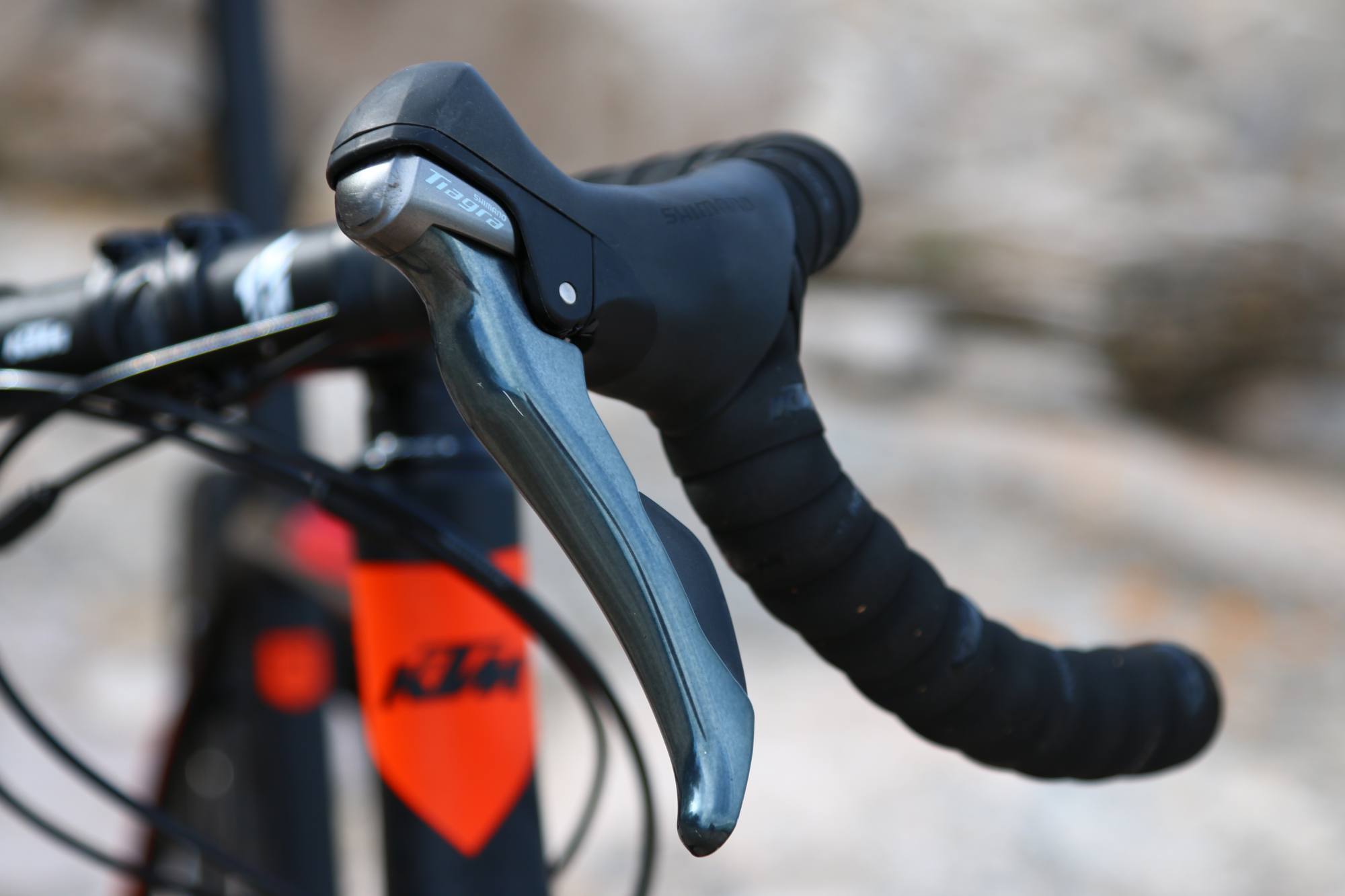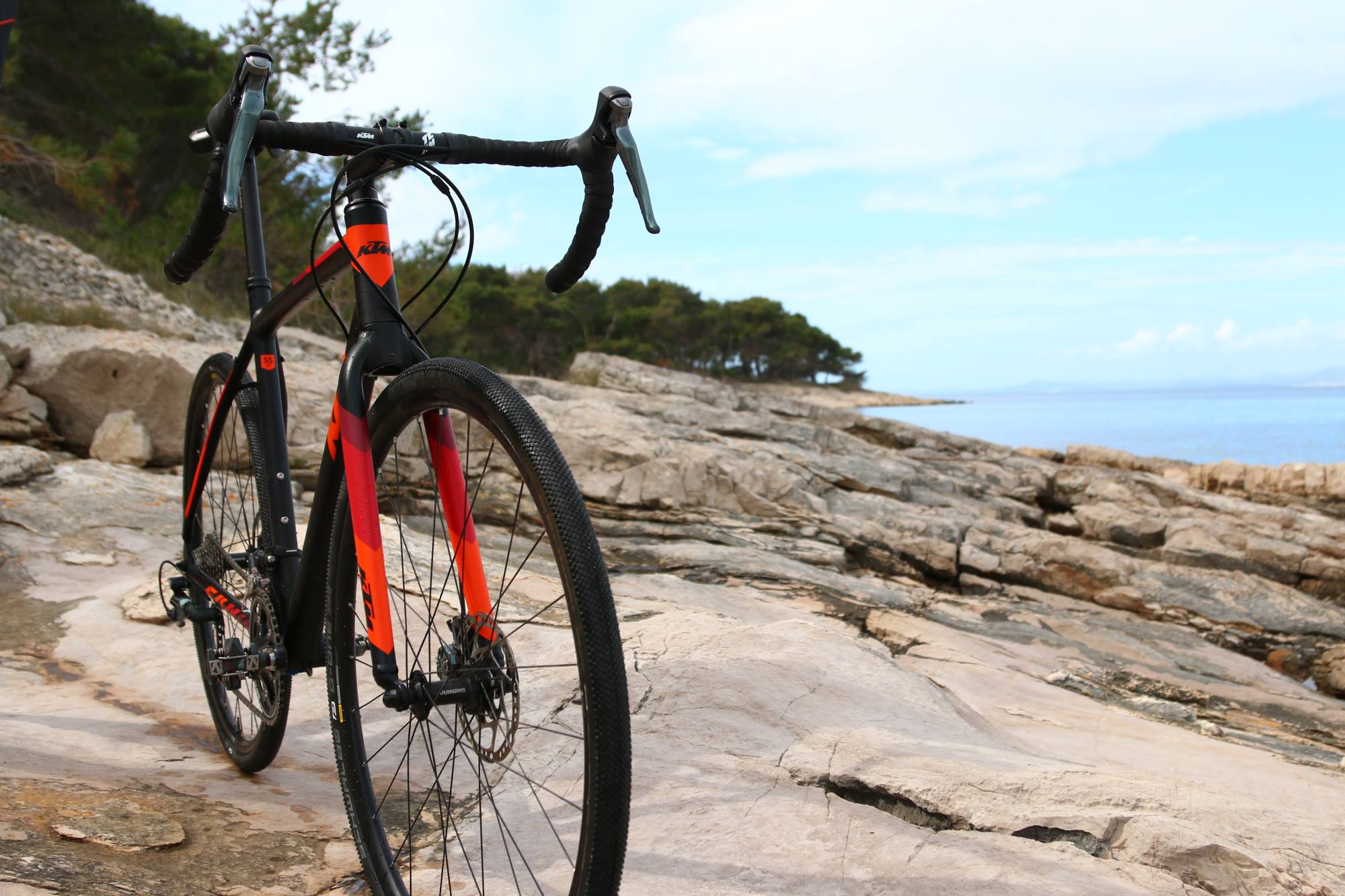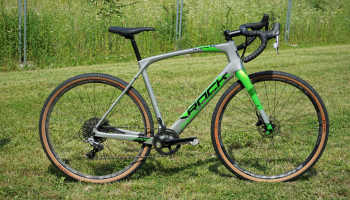Although most cyclist are familiar with KTM’s prestigious MTB, road bike and e-bike range, the CX/gravel line has been somewhat overshadowed at the legendary Austrian cycling brand. It’s true that KTM was not the first to respond to this new trend from overseas, but can boast of a long-standing tradition in cyclocross racing. The carbon Canic CXC model in the lineup has been featured in top-level European competitions for many years, and the CXA in this review is the more wallet-friendly aluminum alternative in the range.
The Canic CXA turned out to be a very impressive looking bike, not much of a surprise, since KTM simply cannot make a blunder using a variation of its classic “team” colors. While the Canic CXC literary burns a hole into our retina with its glowing orange design – an ideal look for a competitive racing — the CXA is more restrained, sporting a matte black finish complemented by the obligatory orange colors of the brand.
And while the race-oriented sibling showcases many of the top-level technologies, such as a tapered head tube, thru-axle wheels, a rear X12 mount, and tubeless compatible rims and tires, the CXA is more of a nod to the long-standing KTM traditions with a 1-1/8 head tube and quick-release wheels. The frame shape is beautiful, but even a passing sight will reveal that we are not dealing with a graceful road bike. The rear stay cross sections are rather beefy, albeit with smooth but powerful welding seams. The fork also has a pleasing shape: at first I though it was made from carbon fiber, but it turned out to be an aluminum model. I hardly wanted to believe this was the case, but as I mentioned, KTM stuck to its traditions when designing the Canic CXA model.
The versatility of the bike is enhanced by the fact that neither the rear luggage rack, nor the mudguard eyelets are missing from the frame. Moreover, the rear chain stay bridges are drilled for secure mounting of a full-fledged fender. So a smaller bag or case can easily be transported by this bike, making it an idea choice for a speedy trips in the city, day to day commuting, or even single day touring. And as usual, we get two bottle cage mounts for on-ride hydration.
The shift duties are carried out by a 2×10 Shimano Tiagra component set, complemented by a 46/36T compact drive crank set and a 11-28T rear cassette. Thus with two downsized cyclocross chain rings it provides a sufficiently wide gearing range. The rear mech is compatible with a 32T sprocket, so the drive train can be turned into a 11-32T setup anytime a lower bottom gear is required.
The “little” Canic has disc brakes, but since there is no hydraulic brake option at the Tiagra level, it received mechanical brake pistons. KTM did not skimp on sourcing one of the best cable-operated disc brake systems on the market: the Shimano CX77 provides generous braking power and requires very little adjustment or maintenance.
The island of Brac offered a near ideal for testing ground for this type of bike: there were asphalt sections with steep climbs, gravel road linking the main roads, and some more challenging trails covered with rocks and roots. The only thing missing from the test conditions was mud. Although we did not miss the latter, for testing purposes it would have been nice to try out the bike in proper cyclocross conditions. My first impression about the Canic was that it is exceptionally comfortable despite the aluminum frame and fork. My second and third impressions were all the the same. On one hand, this is the highest praises to the engineers at KTM, for bringing about and excellent design. On the other hand it says a lot about the Schwalbe G-One tires as well, especially the relatively low pressures they allow. Hence the CXA can cope well with minor road impacts and vibration, so it could be recommended even for epic journeys, and let’s not forget city riding, where potholes and surface cracks are not an unknown phenomenon (especially in our country).
The Tiagra shift-brake levers are good for general riding, but on rough roads and trails they didn’t seem to offer a stable grip. There are a better choices on the market — we need to look no further than the Shimano lineup — but of course these models are not in the Tiagra’s price range. On the other hand, rhe shift performance was flawless, and braking could not be faulted either. While the hydraulic systems generally offer more power, the CX77 has nothing to ashamed about on the mechanical side.
Many riders praise the Schwalbe G-One tires and this is no coincidence. This machine is equipped with the medium-price level “Performance” version, which rolled with little resistance on asphalt, was more or less silent, and offered good traction on both gravel and forest trails. I would recommend it principally for commuting, touring and dry gravel riding, since the low tread hight presumably wouldn’t be the ideal choice for muddy CX racing. The rims are tubeless-compatible, so there is only a minimal investment required if you want to get rid of the tube in the tire.
The supplied handlebar is perfect for cyclocross riding or winter training, but a wide gravel-oriented bar would suit this bike’s character much better. For touring and riding less challenging terrain, it’s definitely a better choice providing more comfort and stability. The X3 saddle is also more suited to the athletic endeavors, e.g, cyclocross racing. Personally it was not my favorite even though it resembles the saddles I generally prefer. Maybe the problem was the longitudinal arch of the top surface, where I simply could not find my ideal position. But the saddle is a personal matter, we all differ in this regard.
Who is the KTM Canic CXA suited for? I can recommend this model to a wide variety of cyclist, indeed it would be a useful addition to a lot of cyclist’s bike stable. It can certainly function as a hobby cyclocross rig — just as the manufacturer originally intended it to be. It could also be a great winter training bike for both MTB and road riders, since it offers fittings for full-size mud guards, can roll quite fast on asphalt, but can also be taken off-road if desired. The 2×10-speed shifting is precise and it does not require constant maintenance. Canic CXA is also a perfect tool for doing fast commutes or making errands in the city. Part of the trip can serve as training, and you can mount a small bag or case with a laptop at the back. As gravel riding is becoming more and more popular in Europe, potential customers of gravel bikes should not overlook this truly versatile model. There are very few thinks this bike is not suited for: one is fitting large touring bags to the frame since it has short chainwheels, and the agile geometry is not very suited for such loads. Neither is it a fell fledged bike for trail riding, or a comfort-oriented trekking bicycle. If you’re in the market for any these latter, look elsewhere! Otherwise it’s highly recommended.
Specifications:
Frame: Canic Alloy, Cyclocross Disc, Cable integrated
Fork: Alloy Fork Disc, Monocoque 1.1/8″
Front Brake: Shimano CX77 mech. Disc
Rear Brake: Shimano CX77 mech. Disc
Gearing: 20 speed
Front Mech: Shimano CX70-B
Rear Mech: Shimano Tiagra 4601 SS
Shifters: Shimano Tiagra 4600-2
Rims: Mavic XC-421
Front Hub: Shimano RS-505 CL 9QR/100
Rear Hub: Shimano RS-505 CL 9QR/135
Front Tyre: Schwalbe G-ONE 35-622 Performance Folding
Rear Tyre: Schwalbe G-ONE 35-622 Performance Folding
Stem: KTM Comp 6°
Bars: KTM Comp Road 16°
Seat Post: KTM Comp 27.2/350
Chainset: Shimano CX50 46-36T
Bottom Bracket: Shimano BBRS500 PB PressFit
Chain: Shimano HG54-10
Cassette: Shimano Tiagra HG500-10 12-28T
Recommended retail price: 419,000 HUF
More information at manufacturer’s website:
http://ktmbikes.com/canic-cxa/


